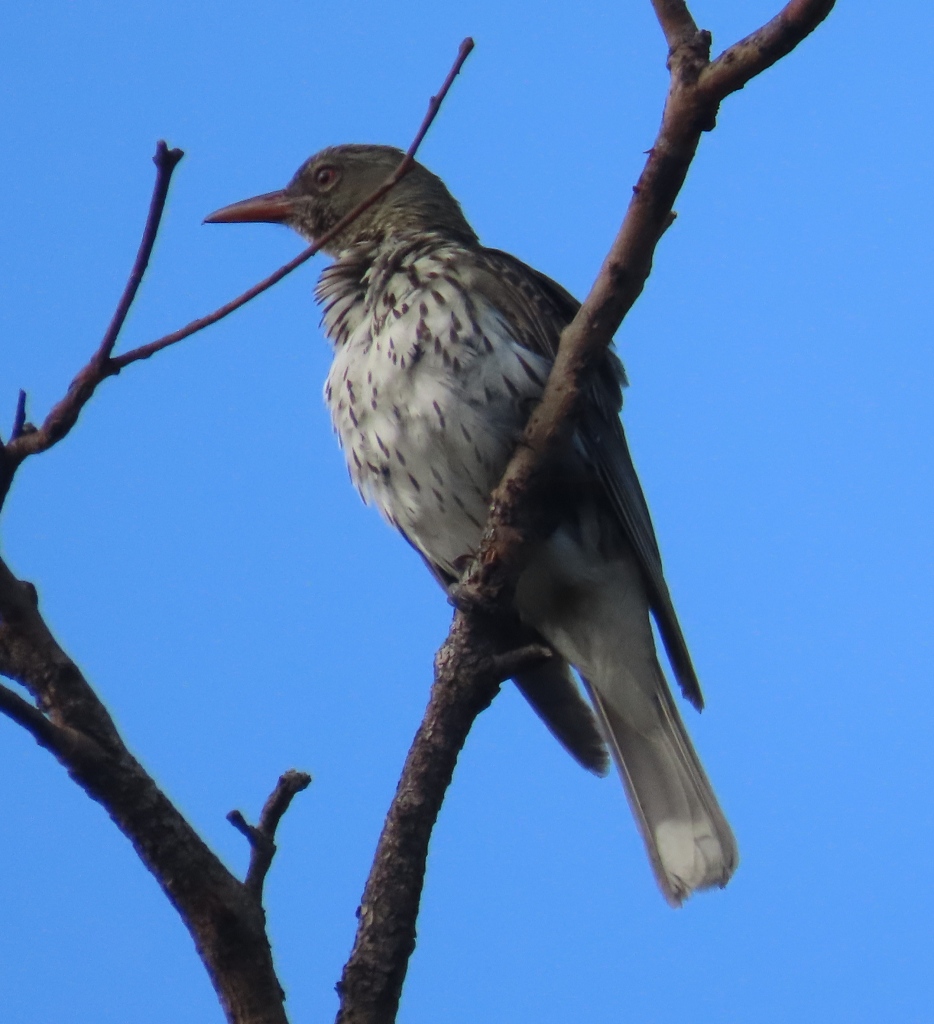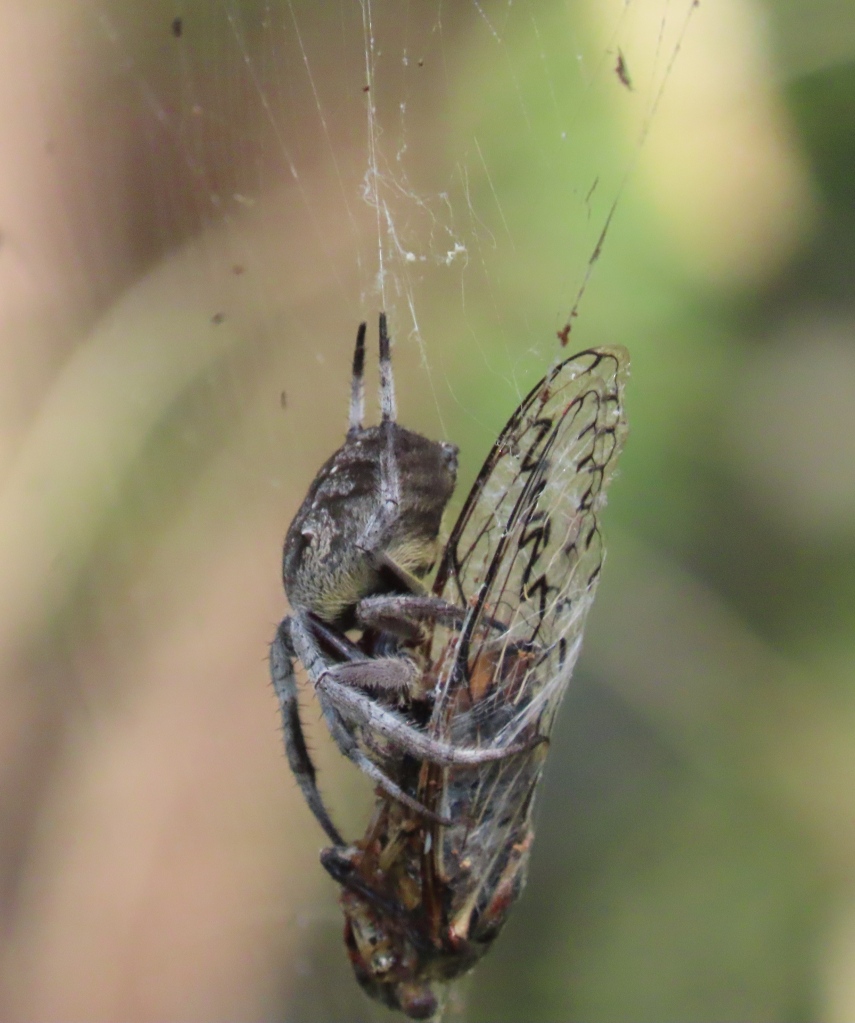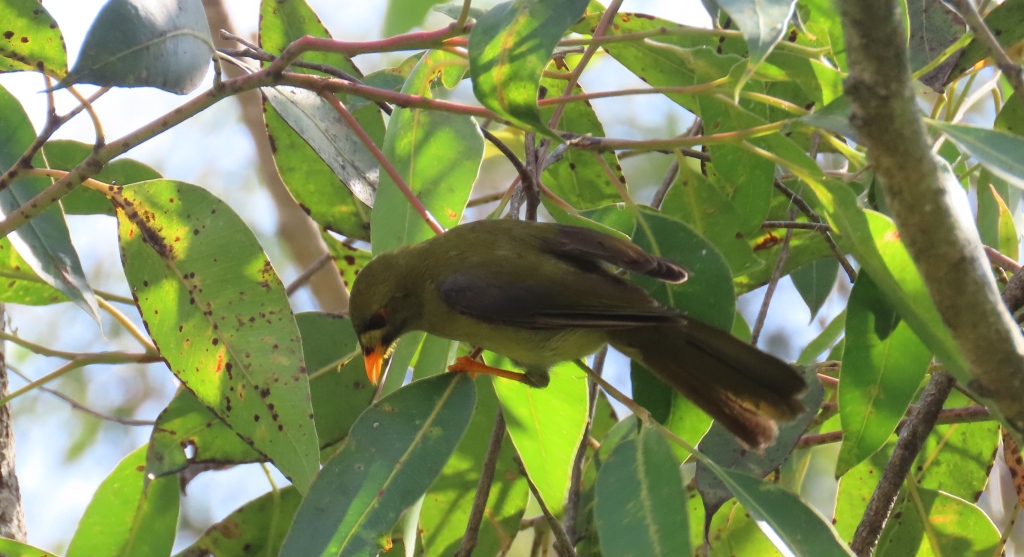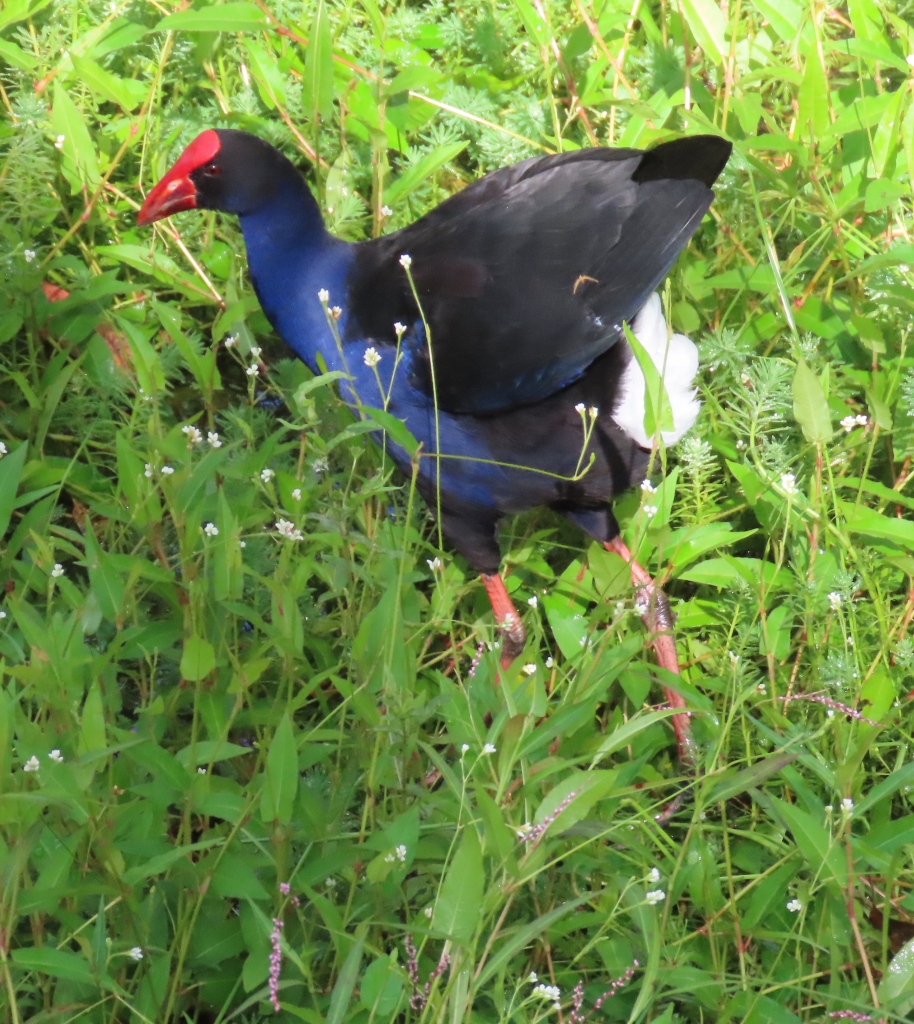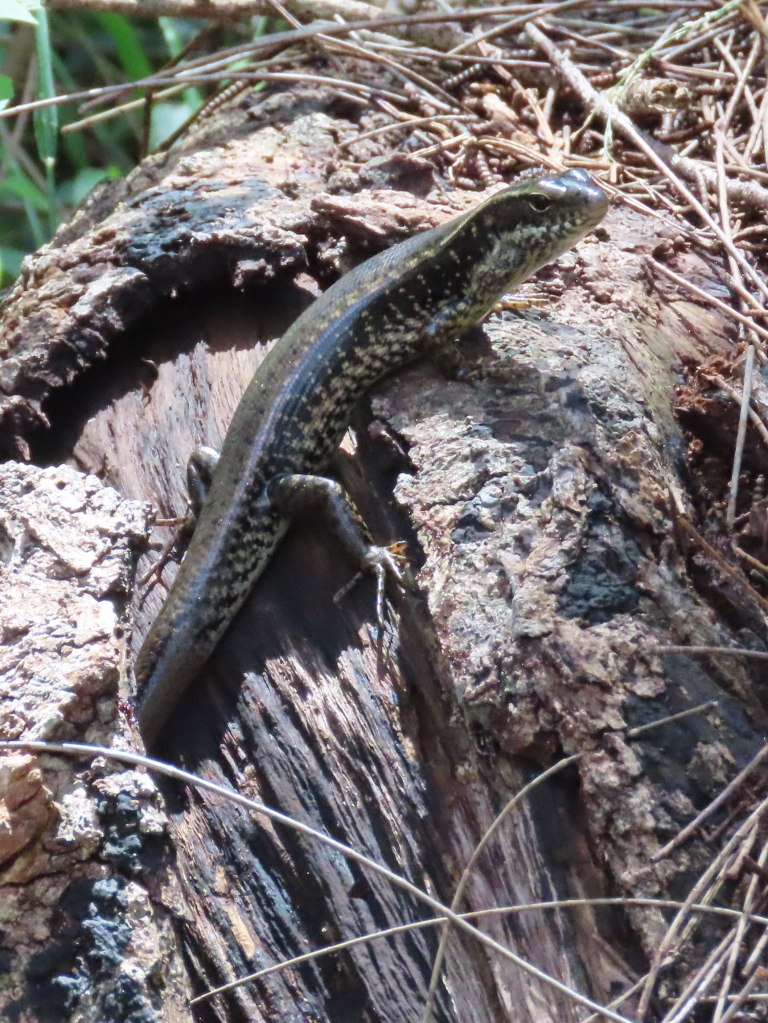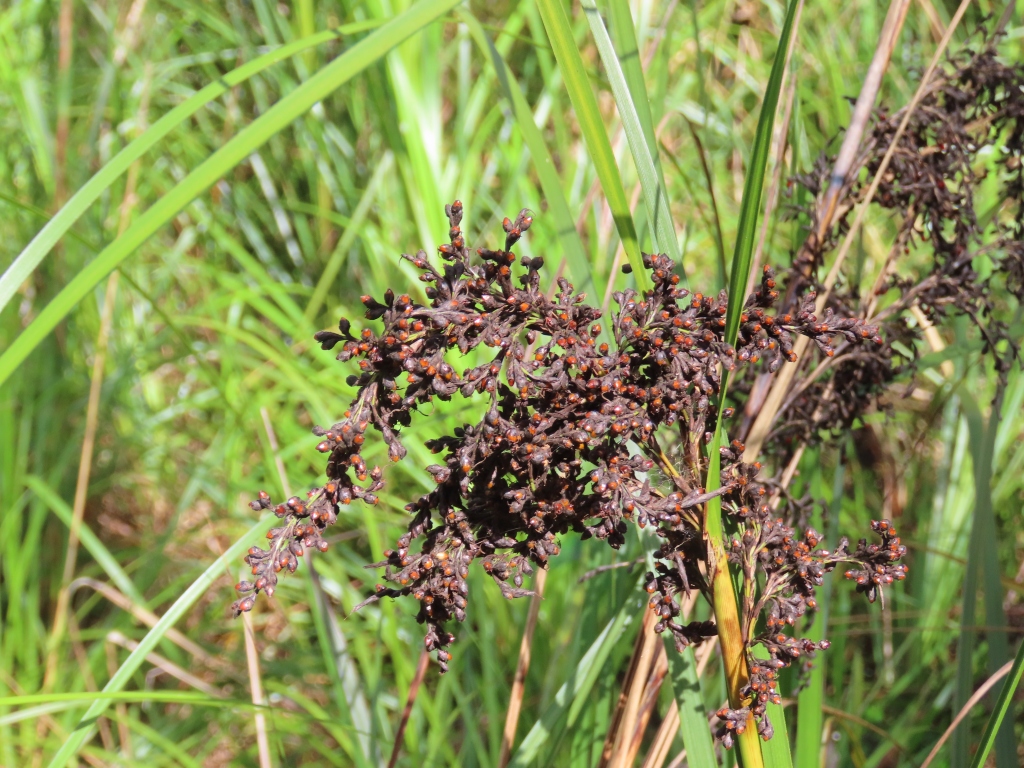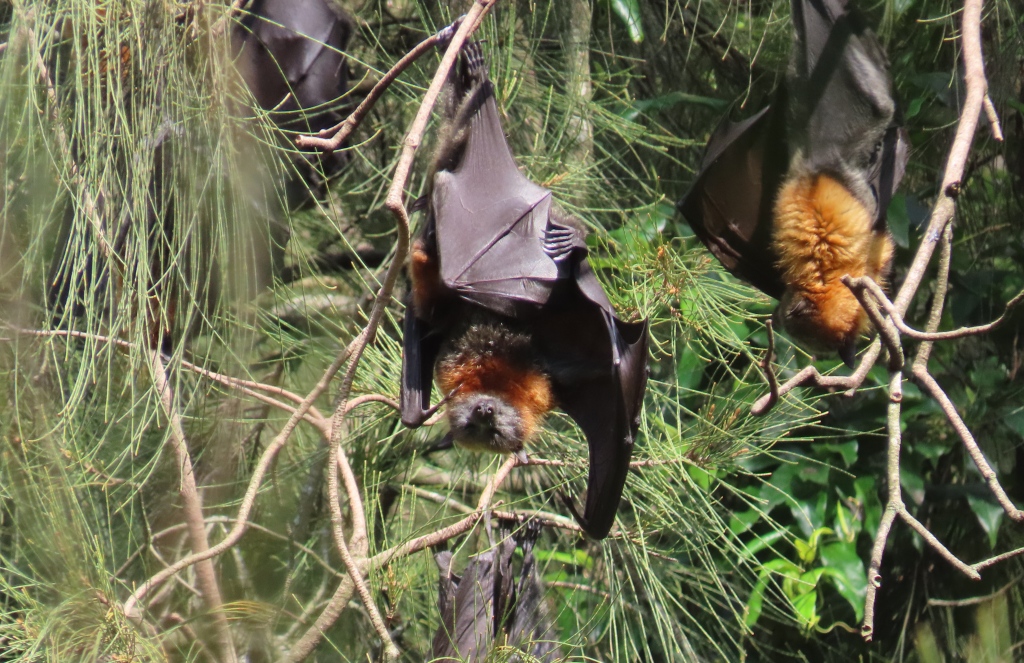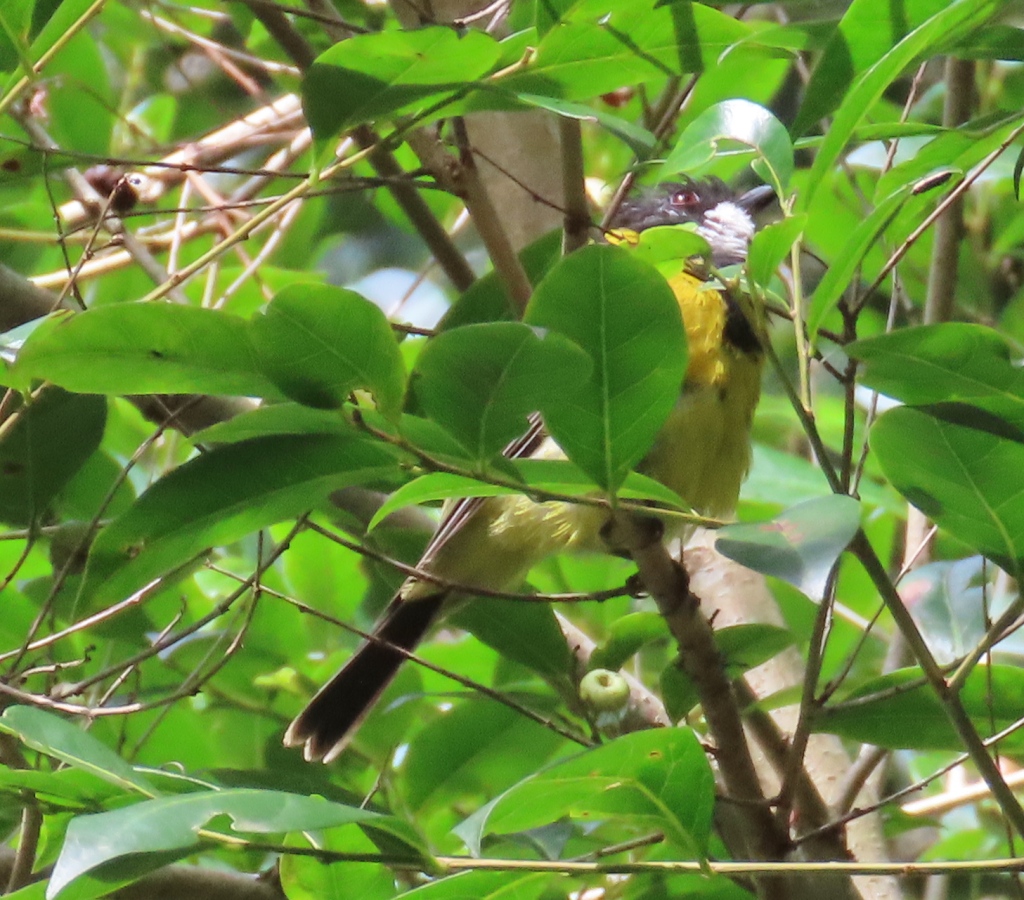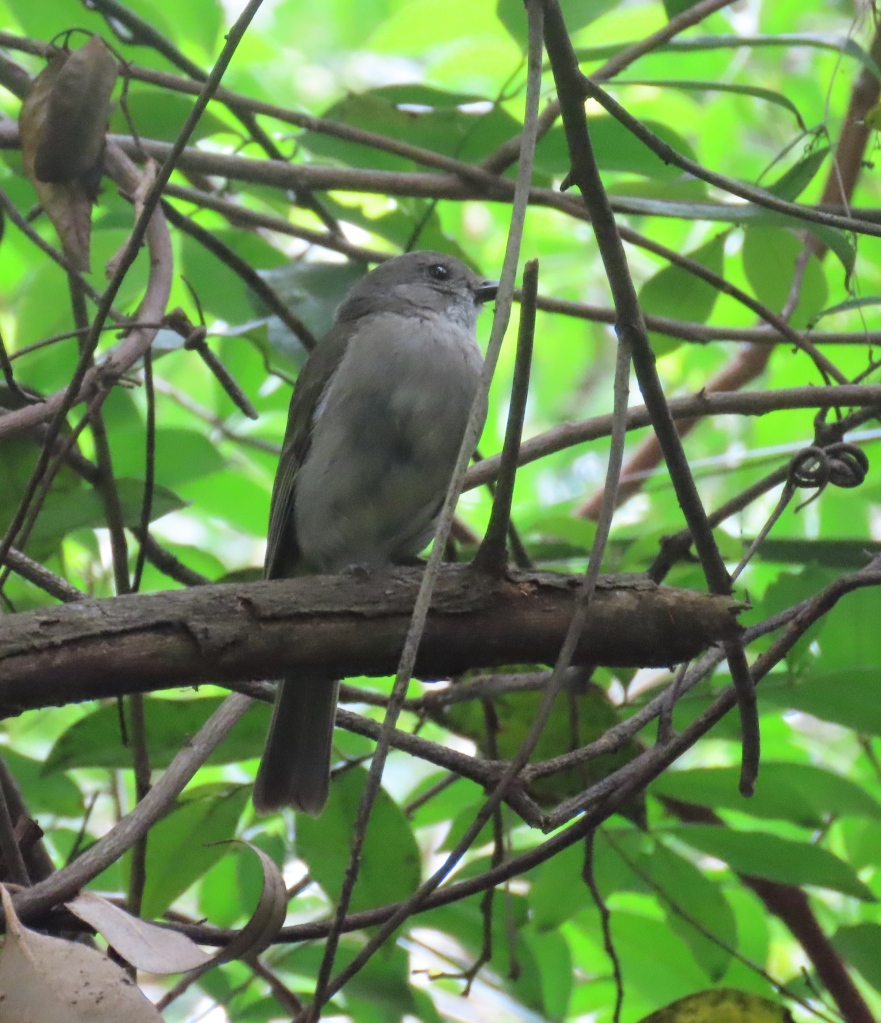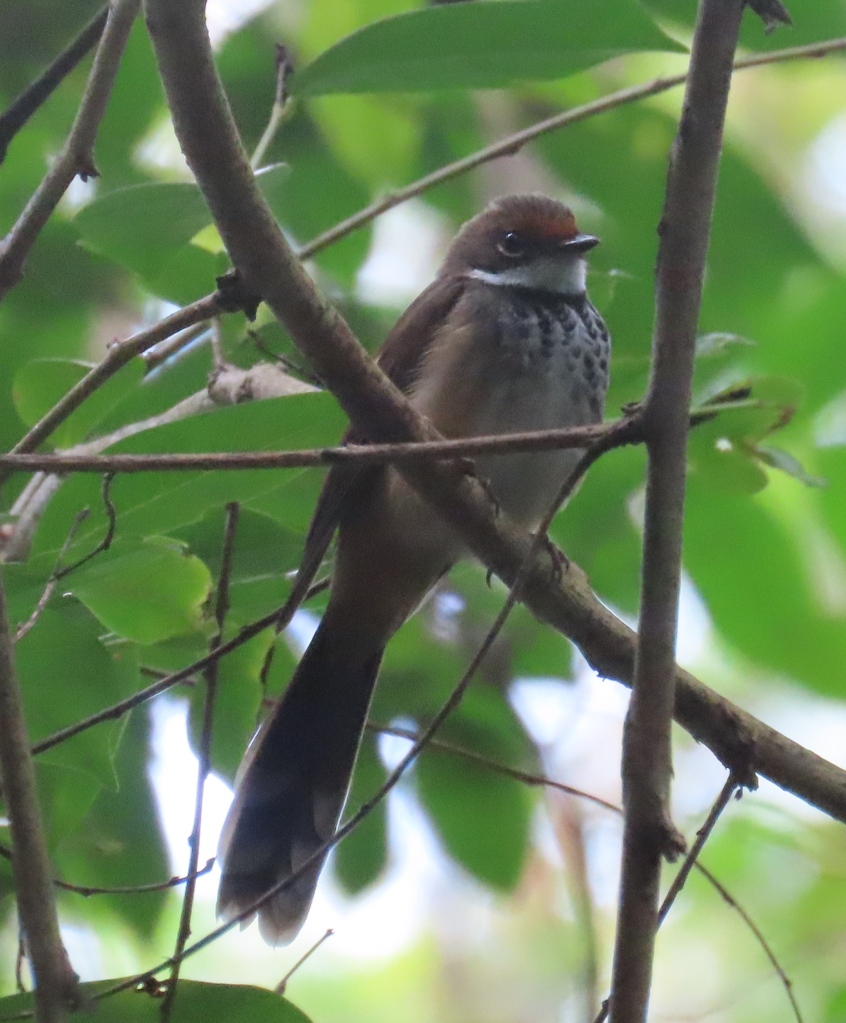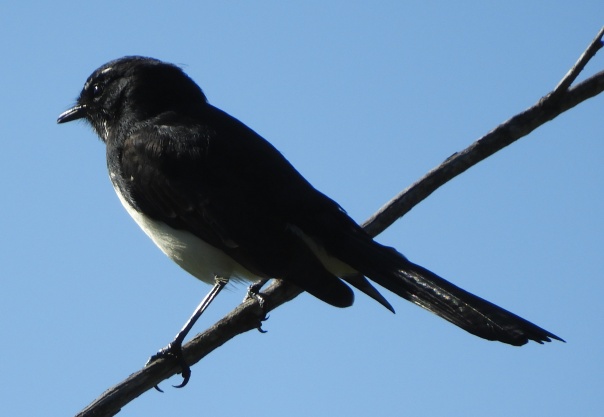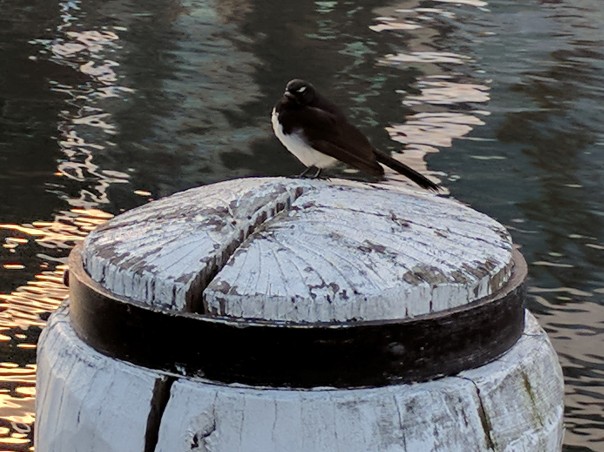Blog Archives
Grey Fantail catching the sun
Early one morning, after some fairly ferocious rain, everyone was seeking sunlight and somewhere to dry out. This little Grey Fantail sat still on a branch for several minutes. Well, what passes for still, in a fantail’s world!
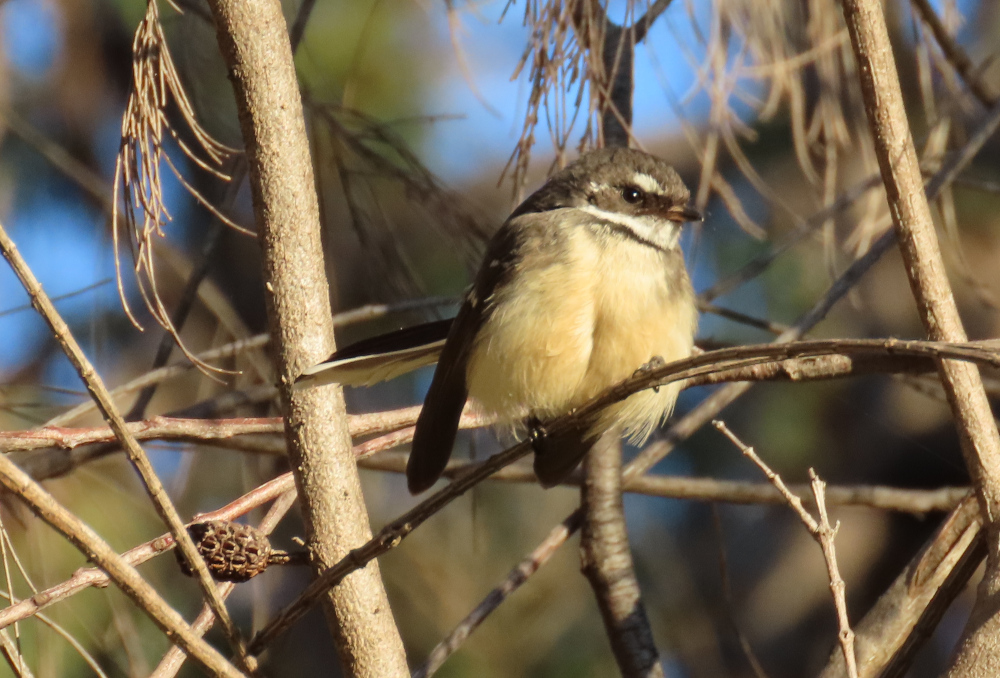
From the way it’s fluffing out its feathers and holding its wings, I’m sure it’s exposing as much of itself to the sun as possible!

Common name: Grey Fantail
Scientific name: Rhipidura fuliginosa
Approximate length: 14-17 cm
Date spotted: 3 June 2024 (winter)
Location: Manly Dam Reserve, New South Wales, Australia: 33°47’01.7″S 151°15’10.3″E
Willie Wagtail enchanted by Grebe
This little Willie Wagtail seems intrigued by the way a Grebe keeps disappearing under the water and popping up again:
My camera battery died as I was taking the above video, which is a pity because the birds were quite close to me. Here’s another video, a bit noisy due to a plane flying overhead, and the birds are further away:
It’s funny how the Coot seems to be surprised by the Grebe’s disappearance too. I love Coots!
I watched the two birds for about fifteen minutes, as the Willie Wagtail tirelessly followed the Grebe around this reedy inlet of Manly Dam. I wonder if the Willie Wagtail was hoping for some insects to fly up each time the Grebe surfaced. Perhaps the Grebe’s activities would disturb a lily pad and cause an insect to jump?

Common names: Australasian Grebe and Willie Wagtail
Scientific names: Tachybaptus novaehollandiae and Rhipidura leucophrys
Approximate length: 23-25 cm and 20 cm
Date spotted: 5 June 2024 (autumn)
Location: Manly Dam Park, near Sydney, Australia: 33°46’34.8″S 151°14’49.6″E
Grey Fantail waving its tail
Grey Fantails are fairly common around my neck of the woods. The problem is that they move so fast, it’s hard to get them in a camera frame. A couple of days ago, one of the little birds kept going back to the same tree to show off its skills. So, with a bit of patience, I was able to get some video footage:
In the video, you can see the bird’s typical behaviour pattern: it makes its way up a tree trunk, waving its tail, then it drops suddenly down to ground level, before starting again. In the background, the orange Banksia flower heads glow in the sunlight.
Here’s a still picture of that fanned tail catching the light:
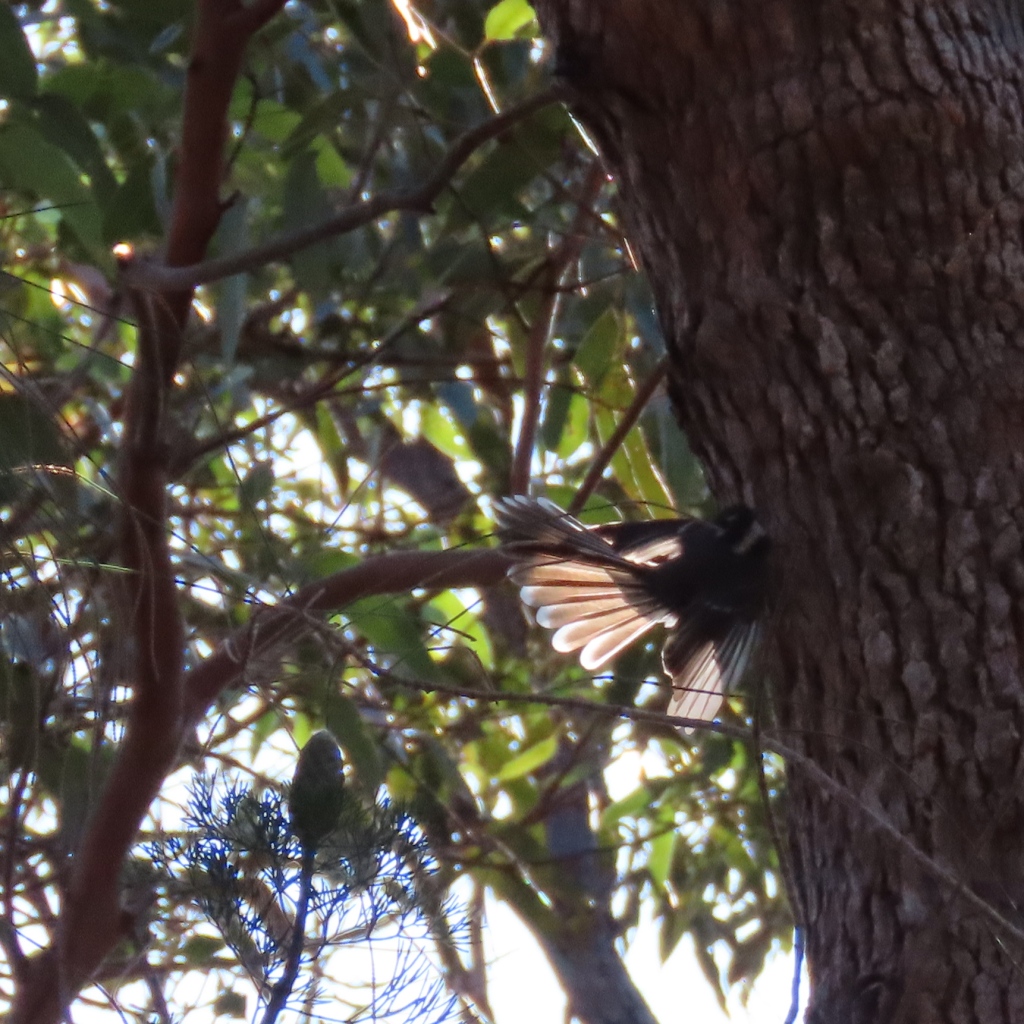
A couple of slightly-fuzzy images give you a better idea of what the bird looks like:
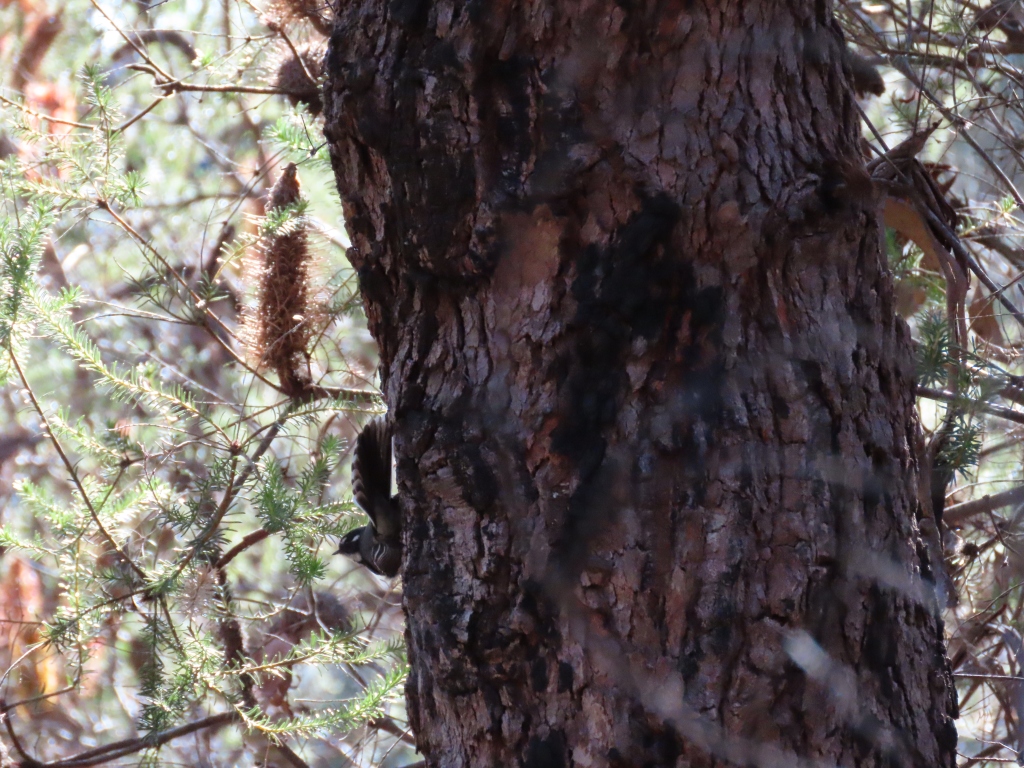
It’s a small bird (about 15 cm from head to tail). This one is quite dark in colour, with its black head and collar markings below the white throat.
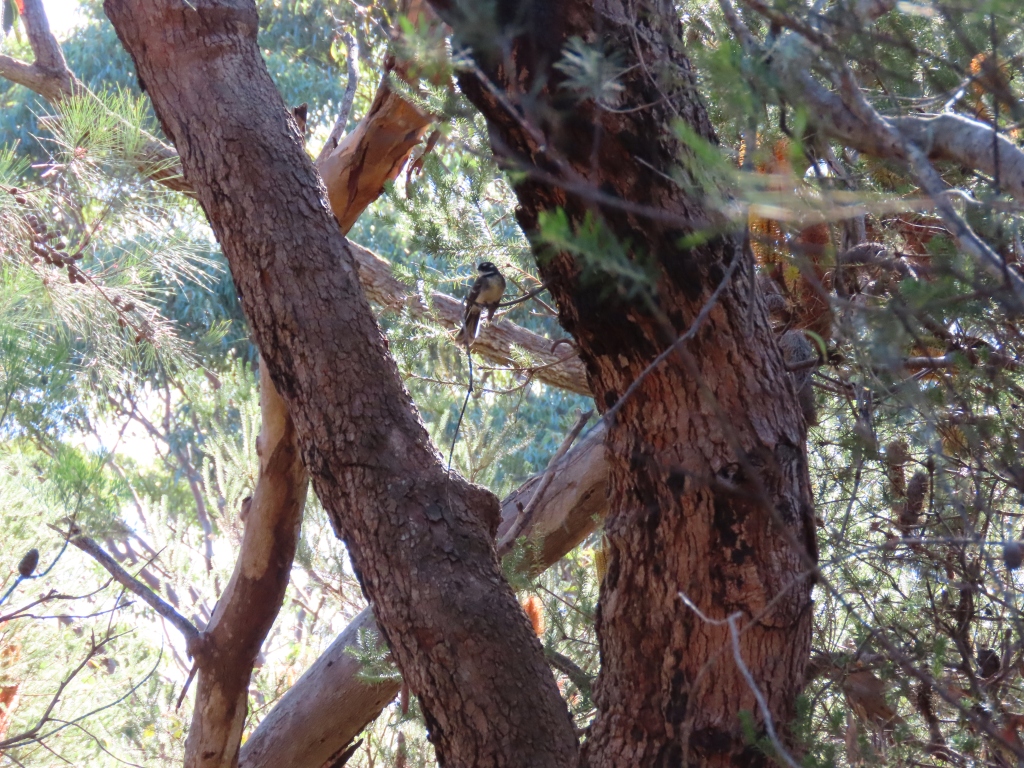
A few weeks ago, I saw another Grey Fantail in a location close to this one. Both birds were on the shores of Manly Dam, about 700 meters apart. This one is quite a lot lighter in colour:


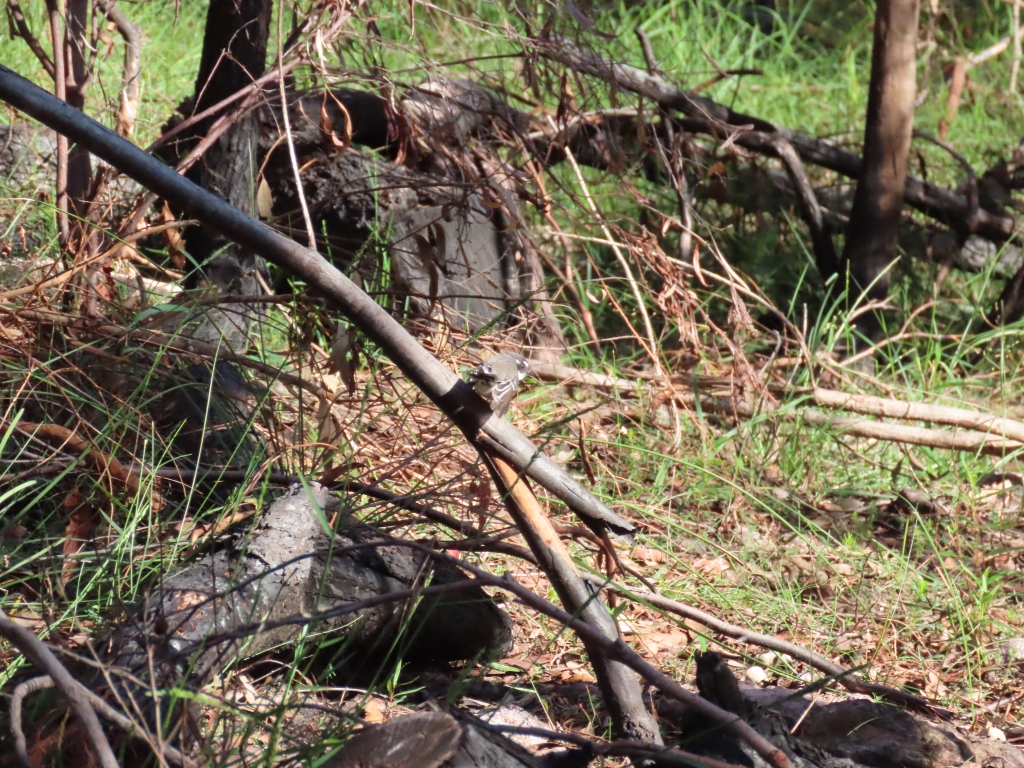
If you’d like to hear what Grey Fantails sound like (squeaky) or see other videos and photos of these birds, check out the list of my fantail blog posts.
Common name: Grey Fantail
Scientific name: Rhipidura fuliginosa
Approximate length: 14-17 cm
Date spotted: 16 June and 10 June, 2023 (winter)
Location: Manly Dam Reserve, New South Wales, Australia: 33°46’52.4″S 151°15’07.2″E and 33°46’37.9″S 151°14’48.5″E
Grey Fantail
This is only the second time I’ve managed to get a picture of a Grey Fantail. Grey Fantails are smaller than Willie Wagtails, and softer in colouring. They make a similar squeaky call, but not quite as piercing as Willie Wagtail.
I’ll try to get a good photo of a Grey Fantail, if one of them will stay still long enough! In the meantime, here’s the earlier video that I took of one of these birds, about three years ago. The bird was showing off its tail-fanning skills.
Common name: Grey Fantail
Scientific name: Rhipidura fuliginosa
Approximate length: 14-17 cm
Date spotted: 4 September 2020 (spring)
Location: Manly Dam Reserve, New South Wales, Australia: 33°46’23.8″S 151°15’05.8″E
Willie Wagtail
Each time I walk around a particular area of the Manly Dam national park, there’s a little Willie Wagtail darting from branch to branch. I don’t know if it’s the same bird each time. It’s cute and cheeky. In this shot, I caught the bird in a rare contemplative mood:
In a previous post, I published a couple of videos of a Willie Wagtail in Pyrmont, near the Sydney city centre. In particular, the first video shows the bird carolling its song to all passers-by, with the Sydney harbour in the background. It’s worth a look: Willie Wagtail sings to beauty at dawn.
Common name: Willie Wagtail
Scientific name: Rhipidura leucophrys
Approximate length: 20 cm
Date spotted: 6 May 2020 (autumn)
Location: Manly Dam National Park, New South Wales, Australia: 33°46’34.3″S 151°14’47.4″E
Willie Wagtail sings to beauty at dawn
It’s early on a cold morning in Pyrmont. A little Willie Wagtail perches on a bollard and sings its heart out. Shades of silver dapple the water. Sydney Harbour Bridge decorates the skyline. All the requisites for an atmospheric scene are present and correct.
Apologies for the low quality of the picture. I was using my mobile phone to film the scene, and had to zoom because the bird was so small. However, this little Willie Wagtail has a big voice and a big heart.
In this second video, a Willie Wagtail harasses a Currawong, chittering and swooping at it. The birds are in the same place as the previous video, so it’s probably the same Willie Wagtail. It’s a common sight in Australia, to see the little birds chasing away the big ones.
Despite their name, Willie Wagtails are actually fantails rather than wagtails. The latter tend to waggle their tails up and down rather than side to side. However, Australians chose the name Willie Wagtail and it stuck.
Here’s a still photo of the same bird, also taken with my mobile phone, so also not wonderfully in focus.
Common name: Willie Wagtail
Scientific name: Rhipidura leucophrys
Approximate length: 20 cm
Date spotted: August 2017 (Winter)
Location: Pyrmont, Sydney: 33°51’57.3″S 151°11’47.9″E



